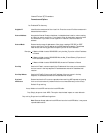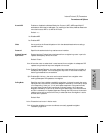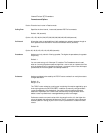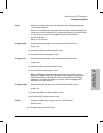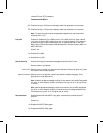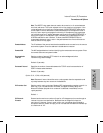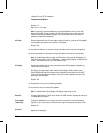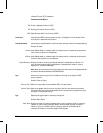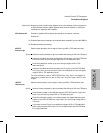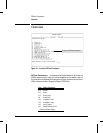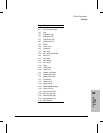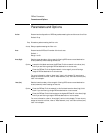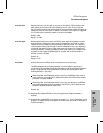
EGP
Exterior Gateway Protocol (EGP).
RIP
Routing Information Protocol (RIP).
OSPF
Open Shortest Path First Protocol (OSPF).
Transit Area
Identifies the OSPF area through which traffic to Neighbor ID is forwarded. Enter
the area ID in dotted-decimal notation.
Transmit Broadcast
Identifies the interface-specific (network and/or subnet) transmit broadcast address.
Default: All Ones
All Ones
Uses Subnet Mask (or a default mask if a subnet mask is not defined) and places all
ones in the host portion of the address.
All Zeros
Uses Subnet Mask (or a default mask if a subnet mask is not defined) and places all
zeroes in the host portion of the address.
Explicit Broadcast
Displays a field for entering a broadcast address in dotted-decimal notation. For
more information about entering addresses in dotted-decimal notation, refer to
Appendix D, “Network Addresses.”
Note: When an interface serves multiple networks, use an explicit broadcast address,
and set the Broadcast Address to 255.255.255.255.
Type
Used with IP import route filters to enable the filtering of two types of OSPF
external metrics.
Default: External Type 1
External Type 1
Metrics are equivalent to the standard OSPF link state metric.
External Type 2
Metrics are greater than the cost of any path internal to the autonomous system.
Using External Type 2 metrics assumes that the inter-autonomous system routing is
the major cost of packet routing.
Type
Specifies the type of static route being configured.
Default: Static Route
Static Route
Displays a screen for creating a default static route to another router for a specific
network or when creating multiple default routes through different routers to a
network. Up to four default routes to a specific network can be defined. All
interfaces in the static route must support ARP requests.
Internet Protocol (IP) Parameters
Parameters and Options
7-28



